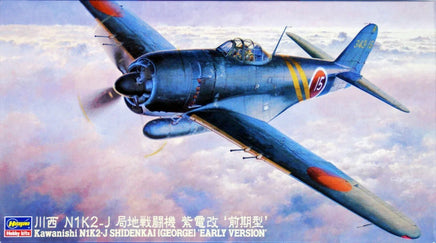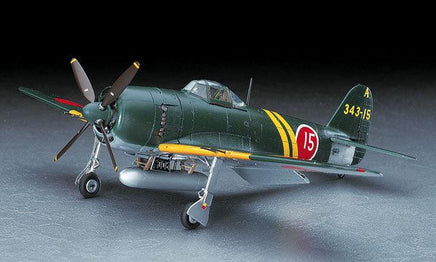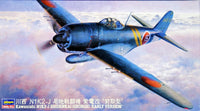The "Shiden Kai" (N1K2-J) was an aircraft developed from the floatplane fighter "Kyofu" ("Strong Wind").
By replacing the floats with wheels and installing the compact and powerful Nakajima Homare engine, the land-based fighter "Shiden" ("Violet Lightning") entered mass production in 1943 (Showa 18) and was officially adopted in October 1944 (Showa 19).
However, the Shiden still had many shortcomings as a land-based fighter. To address this, the fuselage was redesigned, the wing configuration was changed from mid-wing to low-wing, and the performance of the automatic combat flaps was improved.
As a result, a fully developed land-based interceptor fighter, the "Shiden Kai" (N1K2-J), was prototyped and officially adopted in January 1945 (Showa 20).
Later production models of the Shiden Kai had a reduced vertical stabilizer area compared to early production models.
One of the most well-known units to systematically operate the Shiden Kai was the 343rd Naval Air Group. On March 19, 1945, over Matsuyama, Shikoku, 54 Shiden Kais, together with 7 Shidens already in the air, intercepted incoming U.S. Navy carrier-based aircraft—including F6Fs, F4Us, and SB2Cs—and achieved a remarkable result of shooting down 52 enemy aircraft, demonstrating the Shiden Kai’s excellent performance.
Specifications:
- Crew: 1
- Wingspan: 11.99 m
- Length: 9.346 m
- Height: 3.96 m
- Loaded weight: 4,200 kg
- Engine: Nakajima Homare 21
- Takeoff power: 2,000 horsepower
- Maximum speed: 594 km/h (at 5,600 m altitude)
- Armament: 4 × 20mm cannons




